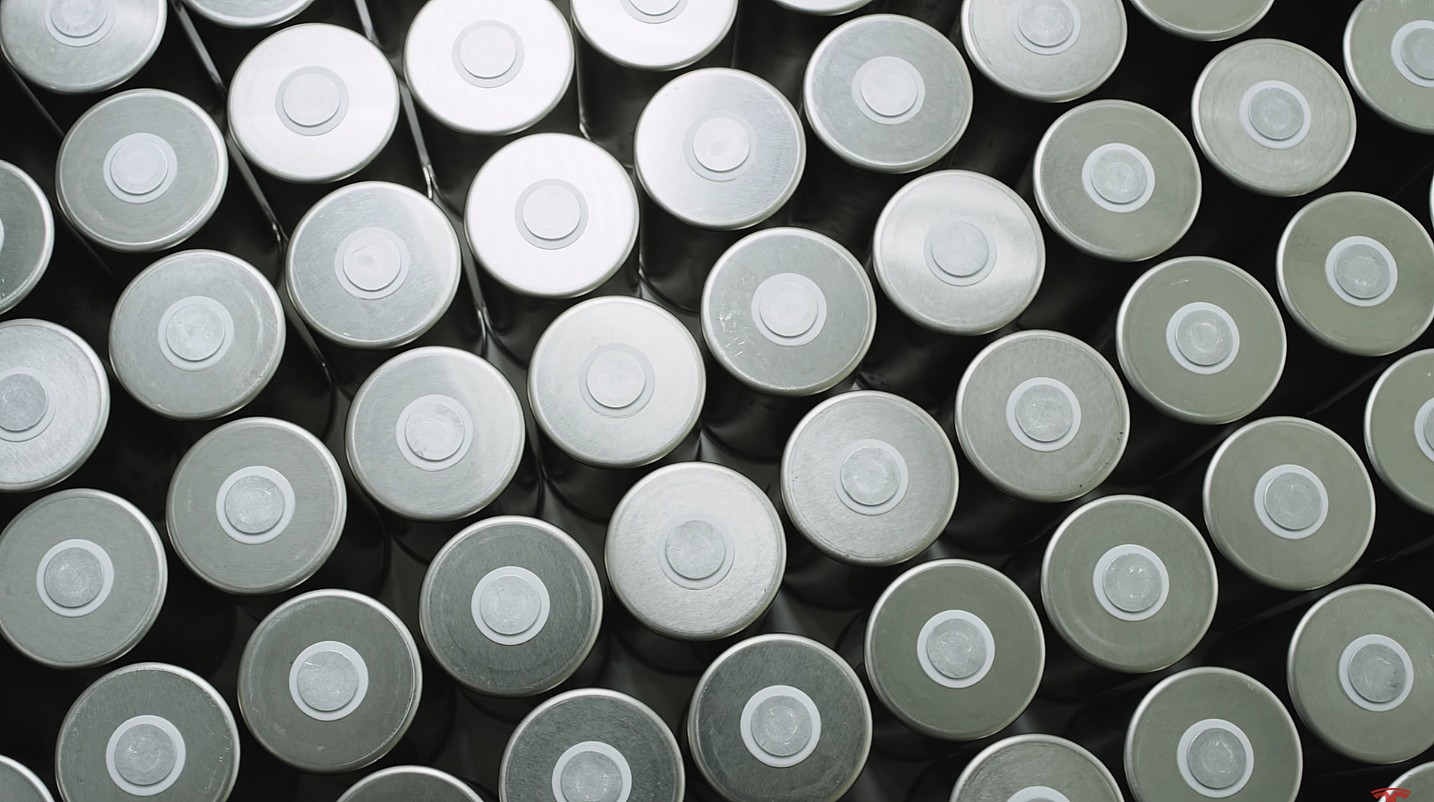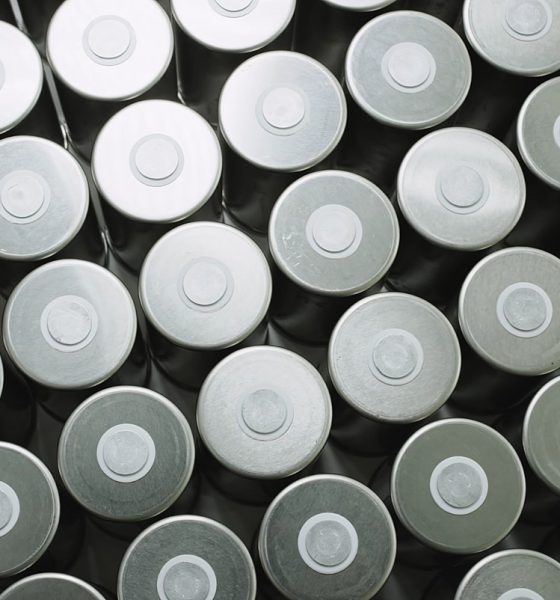Former Tesla co-founder JB Straubel’s battery recycling startup Redwood Materials announced recently that it had come to terms with Envision AESC for cell recycling efforts. After CNBC initially reported the partnership yesterday, Teslarati spoke to the battery recycling startup, indicating there are plenty of details that make the pairing ideal for the entire EV sector.
While Redwood’s most recent announcement sheds light on a partnership with AESC, it is not the only contributor to the batter recycling efforts that Straubel’s company is working on. With the conglomerate’s announcement, Redwood now works with the two largest battery manufacturing companies in North America. Along with AESC, Redwood is also working with Panasonic, Tesla’s supplier at its factory in Sparks, Nevada, known as the Tesla Gigafactory. While Envision AESC works out of Tennessee, Redwood has established two battery cell producers in separate regions of the United States, working on expanding its footprint of possible EV manufacturers who need assistance in responsibly disposing of their batteries.
Resuing battery materials will eliminate some criticism regarding mining, which can be hazardous to the environment. Ultimately, Redwood aims to give EV manufacturers the ability to reuse their materials, and it has gotten to the point that the difference between new and recycled materials is relatively “indistinguishable,” Straubel said.
However, Bill Williams, Envision AESC’s Director of Business Development, also chimed in on the partnership with Redwood. The two companies’ goals of sustainability and cost-effectiveness will help the development of the electric vehicle sector, along with the ongoing production of energy storage products that are becoming more popular.
Williams said:
“Envision AESC’s partnership with Redwood Materials will allow all production scrap from our US factory to be recycled, and, eventually, for Redwood to supply material for AESC. This circular supply chain supports Envision AESC’s deep commitment to sustainability and already creates substantial cost savings for Envision AESC that will be passed down to future electric vehicles and energy products.”
ALSO READ:
Two Tesla Execs linked to advanced recycling startup Redwood Materials
Batteries from AESC’s facility in Smyrna, Tennessee, are being used to power electric buses, energy storage units, and the Nissan LEAF, among many other products, a Redwood spokesperson told Teslarati. Additionally, the material being received by Redwood from both the Tesla Gigafactory makes up for more than 1 GWh of material from Panasonic alone. This is ultimately fueled by the expansion of the Gigafactory, and the material received by Redwood will return to Panasonic and be put into new batteries, according to Redwood’s spokesperson.
Redwood will recycle all production scrap from any of its partners, including cathode and anode materials and cells or battery modules that don’t pass validation and are past the point of repair. The goal of its partnership with AESC is to produce material that could eventually be returned to the supplier as a part of a fully circular supply chain, eliminating the need for massive mining pushes or extensive contracts with battery material suppliers, the spokesperson added.
Redwood’s development of recycled goods will eventually turn the EV sector into an even more sustainable industry that could lead to the complete phase-out of combustion engines altogether. If batteries are sourced properly as the EV sector continues to grow, many of the cars on the road could contain recycled materials thanks to Redwood’s initiative, turning the already Earth-friendly EV sector into one of the most sustainable industries globally.

News
Tesla FSD V14.2.1 is earning rave reviews from users in diverse conditions
Tesla’s Full Self-Driving (Supervised) software continues its rapid evolution, with the latest V14.2.1 update drawing widespread praise.

Tesla’s Full Self-Driving (Supervised) software continues its rapid evolution, with the latest V14.2.1 update drawing widespread praise for its smoother performance and smarter decision-making.
Videos and firsthand accounts from Tesla owners highlight V14.2.1 as an update that improves navigation responsiveness, sign recognition, and overall fluidity, among other things. Some drivers have even described it as “more alive than ever,” hinting at the system eventually feeling “sentient,” as Elon Musk has predicted.
FSD V14.2.1 first impressions
Early adopters are buzzing about how V14.2.1 feels less intrusive while staying vigilant. In a post shared on X, Tesla owner @LactoseLunatic described the update as a “huge leap forward,” adding that the system remains “incredibly assertive but still safe.”
Another Tesla driver, Devin Olsenn, who logged ~600 km on V14.2.1, reported no safety disengagements, with the car feeling “more alive than ever.” The Tesla owner noted that his wife now defaults to using FSD V14, as the system is already very smooth and refined.
Adverse weather and regulatory zones are testing grounds where V14.2.1 shines, at least according to testers in snow areas. Tesla watcher Sawyer Merritt shared a video of his first snowy drive on unplowed rural roads in New Hampshire, where FSD did great and erred on the side of caution. As per Merritt, FSD V14.2.1 was “extra cautious” but it performed well overall.
Sign recognition and freeway prowess
Sign recognition also seemed to show improvements with FSD V14.2.1. Longtime FSD tester Chuck Cook highlighted a clip from his upcoming first-impressions video, showcasing improved school zone behavior. “I think it read the signs better,” he observed, though in standard mode, it didn’t fully drop to 15 mph within the short timeframe. This nuance points to V14.2.1’s growing awareness of temporal rules, a step toward fewer false positives in dynamic environments.
FSD V14.2.1 also seems to excel in high-stress highway scenarios. Fellow FSD tester @BLKMDL3 posted a video of FSD V14.2.1 managing a multi-lane freeway closure due to a police chase-related accident. “Perfectly handles all lanes of the freeway merging into one,” the Tesla owner noted in his post on X.
FSD V14.2.1 was released on Thanksgiving, much to the pleasant surprise of Tesla owners. The update’s release notes are almost identical to the system’s previous iteration, save for one line item read, “Camera visibility can lead to increased attention monitoring sensitivity.”
News
Tesla FSD Supervised ride-alongs in Europe begin in Italy, France, and Germany
The program allows the public to hop in as a non-driving observer to witness FSD navigate urban streets firsthand.

Tesla has kicked off passenger ride-alongs for Full Self-Driving (Supervised) in Italy, France and Germany. The program allows the public to hop in as a non-driving observer to witness FSD navigate urban streets firsthand.
The program, detailed on Tesla’s event pages, arrives ahead of a potential early 2026 Dutch regulatory approval that could unlock a potential EU-wide rollout for FSD.
Hands-Off Demos
Tesla’s ride-along invites participants to “ride along in the passenger seat to experience how it handles real-world traffic & the most stressful parts of daily driving, making the roads safer for all,” as per the company’s announcement on X through its official Tesla Europe & Middle East account.
Sign-ups via localized pages offer free slots through December, with Tesla teams piloting vehicles through city streets, roundabouts and highways.
“Be one of the first to experience Full Self-Driving (Supervised) from the passenger seat. Our team will take you along as a passenger and show you how Full Self-Driving (Supervised) works under real-world road conditions,” Tesla wrote. “Discover how it reacts to live traffic and masters the most stressful parts of driving to make the roads safer for you and others. Come join us to learn how we are moving closer to a fully autonomous future.”
Building trust towards an FSD Unsupervised rollout
Tesla’s FSD (Supervised) ride-alongs could be an effective tool to build trust and get regular car buyers and commuters used to the idea of vehicles driving themselves. By seating riders shotgun, Tesla could provide participants with a front row seat to the bleeding edge of consumer-grade driverless systems.
FSD (Supervised) has already been rolled out to several countries, such as the United States, Canada, Australia, New Zealand, and partially in China. So far, FSD (Supervised) has been received positively by drivers, as it really makes driving tasks and long trips significantly easier and more pleasant.
FSD is a key safety feature as well, which became all too evident when a Tesla driving on FSD was hit by what seemed to be a meteorite in Australia. The vehicle moved safely despite the impact, though the same would likely not be true had the car been driven manually.
News
Swedish union rep pissed that Tesla is working around a postal blockade they started
Tesla Sweden is now using dozens of private residences as a way to obtain license plates for its vehicles.

Two years into their postal blockade, Swedish unions are outraged that Tesla is still able to provide its customers’ vehicles with valid plates through various clever workarounds.
Seko chairman Gabriella Lavecchia called it “embarrassing” that the world’s largest EV maker, owned by CEO Elon Musk, refuses to simply roll over and accept the unions’ demands.
Unions shocked Tesla won’t just roll over and surrender
The postal unions’ blockade began in November 2023 when Seko and IF Metall-linked unions stopped all mail to Tesla sites to force a collective agreement. License plates for Tesla vehicles instantly became the perfect pressure point, as noted in a Dagens Arbete report.
Tesla responded by implementing initiatives to work around the blockades. A recent investigation from Arbetet revealed that Tesla Sweden is now using dozens of private residences, including one employee’s parents’ house in Trångsund and a customer-relations staffer’s home in Vårby, as a way to obtain license plates for its vehicles.
Seko chairman Gabriella Lavecchia is not pleased that Tesla Sweden is working around the unions’ efforts yet again. “It is embarrassing that one of the world’s largest car companies, owned by one of the world’s richest people, has sunk this low,” she told the outlet. “Unfortunately, it is completely frivolous that such a large company conducts business in this way.”
Two years on and plates are still being received
The Swedish Transport Agency has confirmed Tesla is still using several different workarounds to overcome the unions’ blockades.
As noted by DA, Tesla Sweden previously used different addresses to receive its license plates. At one point, the electric vehicle maker used addresses for car care shops. Tesla Sweden reportedly used this strategy in Östermalm in Stockholm, as well as in Norrköping and Gothenburg.
Another strategy that Tesla Sweden reportedly implemented involved replacement plates being ordered by private individuals when vehicles change hands from Tesla to car buyers. There have also been cases where the police have reportedly issued temporary plates to Tesla vehicles.











